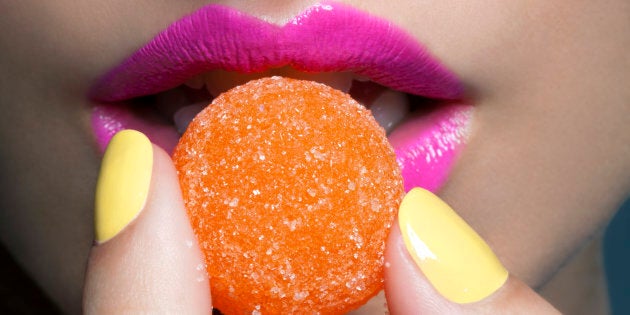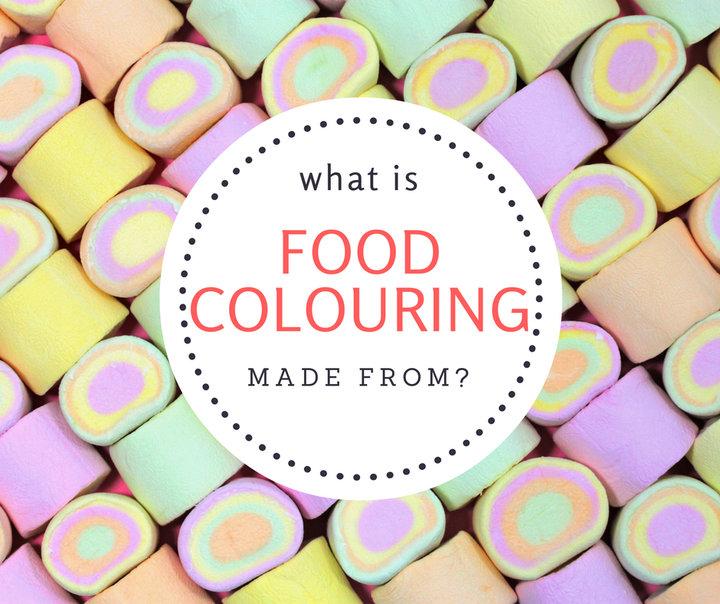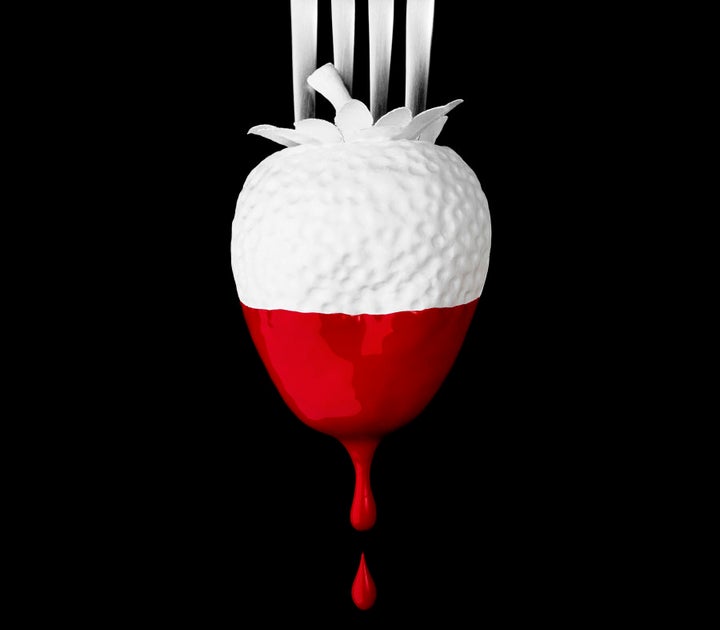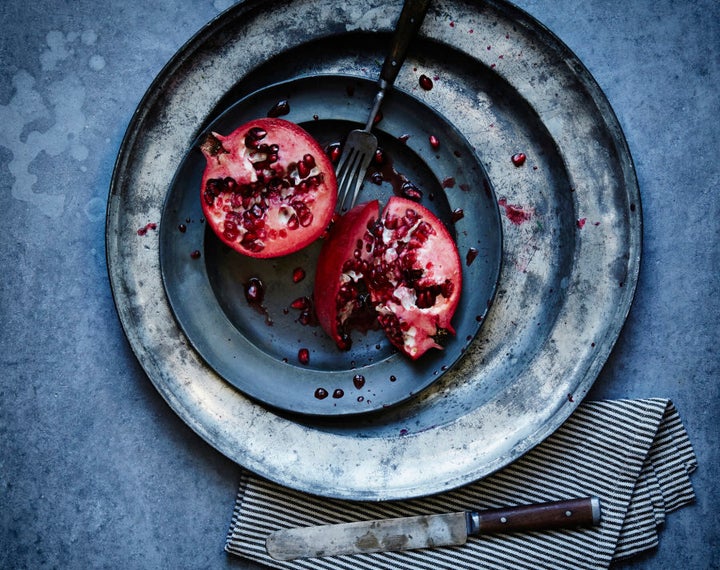
Many of us eat bright, colourful foods every day. No, we're not just talking about fruit and vegetables -- we mean delicious sweets, soft drinks, ice cream, cereals and biscuits, which can all contain added food colouring.
But what is food colouring, really? And is it something we should be worried about?
"Food colouring are substances that are added to food and beverages in small quantities to make them visually more appealing to consumers," Jian Zhao, associate professor of Food Science and Technology at UNSW, told The Huffington Post Australia.
"Food colourings are found in a wide range of foods and beverages such as soft drinks, confectionery products, some bakery goods and meat analogue products (meat alternatives)."
Essentially, food colouring is used to add colour to foods to make them more attractive and eye-catching, and they can also be added to medications. While some of the colours are derived from natural products, others are made synthetically.

How food colours are made
"There are natural food colours and synthetic ones," Zhao explained. "Examples of natural colours are carotenoids (orange), chlorophyllin (green), anthocyanins (purple) and betanin (red), and they are mostly extracted from fruit and vegetables.
"Examples of synthetic colours are sunset yellow, brilliant blue and allura red, and they are manufactured by various processes of chemical reactions."
Artificial colours
Chemically produced food colouring is derived from petroleum, a crude oil product. These artificial colours are listed in a product's ingredients, typically as numbers. For example, 'Colours (x, x)'.
When trying to find artificial colours in a product, look for the following numbers:
- Yellows -- 102, 104, 107, 110
- Red -- 122-129
- Blues - 131, 132, 133
- Green -- 142
- Black -- 151, 153
- Browns 154, 155

Although artificial colours are chemically constructed in a lab, much less is needed when added to food products compared to natural food colours, which also undergo processing.
"Compared with natural colours, synthetic colours are generally more intense in colour (meaning a lesser amount is needed), more stable, easier to mix with other food ingredients and less expensive," Zhang said.
Natural colours
"Natural colours are extracted from something in its natural form (for example, purple colouring extracted from blueberries and added into a product), so there is still processing involved but the colour isn't artificially produced," Karena Burke, senior lecturer in Psychology at Central Queensland University with a special interest in food additives and intolerances, told HuffPost Australia.
Natural food colouring is derived from plant and animal pigments and include:
- Annatto (orange-red) -- E160b
- Betanin (red) -- E162 (derived from beetroot)
- Butterfly pea (blue)
- Caramel colouring -- E150
- Carotenes (red-orange) -- E160a
- Chlorophyll -- E140 and Chlorophyllin -- E141
- Carmine/cochineal (red) -- E120 (derived from cochineal insect)
- Cyanidin (red-purple) -- E163a (derived from berries and purple cabbage)
- Delphinidin (blue-red) -- E163b
- Elderberry juice (red-purple-blue)
- Malvidin (red-blue) -- E163c (derived from red grapes, berries and black rice)
- Pandan (green)
- Paprika (red) -- E160c
- Pelargonidin (orange) -- E163d (derived from berries, pomegranate and plums)
- Petunidin (dark red-purple) -- E163f
- Saffron (yellow) -- E164
- Titanium dioxide (white) -- E171
- Turmeric (yellow) -- E100

The potential risks
"All colours added to foods in Australia, like any other food additives, are regulated by the Food Standard Codes," Zhang said.
"These colours -- natural or synthetic -- must undergo extensive toxicological evaluation before they are approved for use in foods and beverages, and approval is granted only when their safety is assured.
"Health authorities like FSANZ and FDA also constantly review new scientific data on the safety of food additives that emerge. There is no need to worry about the safety of food additives so long as they are approved for use in food by FSANZ."
However, Burke and Anne Swain -- head dietitian at the Royal Prince Alfred Hospital Allergy Unit -- say both artificial and natural colours can have a negative impact on select people.
"The amounts that are allowed of these colours are regulated, so they are generally not a problem," Swain told HuffPost Australia. "But in people who are sensitive they may get side effects.
"Generally we find the natural ones are well tolerated. The one exception to that is annatto which is called 160B, which in sensitive individuals can cause adverse reactions."

According to Swain, in certain individuals, artificial food colouring can also cause allergic reactions.
"The artificial colours in people who are sensitive can also give them side effects. They can affect the skin, gut, respiratory tract and the central nervous system," Swain said.
Artificial colouring, along with the cocktail of preservatives and flavourings added to some foods, may also be linked to attention-deficit/hyperactivity disorder, Burke says.
"There are risks associated with people diagnosed with some psychological and developmental disorders (for example, ADHD) and there is research that suggests it increases hyperactivity and decreases in attention, particularly from artificial colours," she explained.
"A number of the artificial colours used in Australia are required to have warning labels in the EU. Reactions, however (and thus the risk), are very individualised and there are sub-groups that are more likely to experience adverse reactions than others."

Check the label
If you would like to avoid artificial food colouring, always be sure to check the product's ingredient list using the above number guide.
"Food labelling and manufacturers providing alternatives is important," Swain said. "If there are highly coloured foods and a mother knows her child gets hyperactive from them, then there needs to be choices. A lot of the sweets nowadays are taking the artificial colours out and using natural colours."
To avoid added food colouring altogether like Burke, she recommends opting for as many unprocessed, whole foods as possible.
"We don't know the effects of long term consumption, and we don't know with certainty that they are the cause of adverse symptoms like hyperactivity and inattention," Burke told HuffPost Australia.
"We do know is that they can exacerbate these symptoms in individuals who are sensitive to the chemicals (both artificial and natural) or who have these developmental diagnoses like ADHD.
"Personally, I choose to avoid them where I can for myself and my family, and do so by eating a diet as unprocessed and natural as possible. My food choices are generally determined by what is in the foods I'm purchasing -- I'd choose a product without colouring over an alternative that contained them."